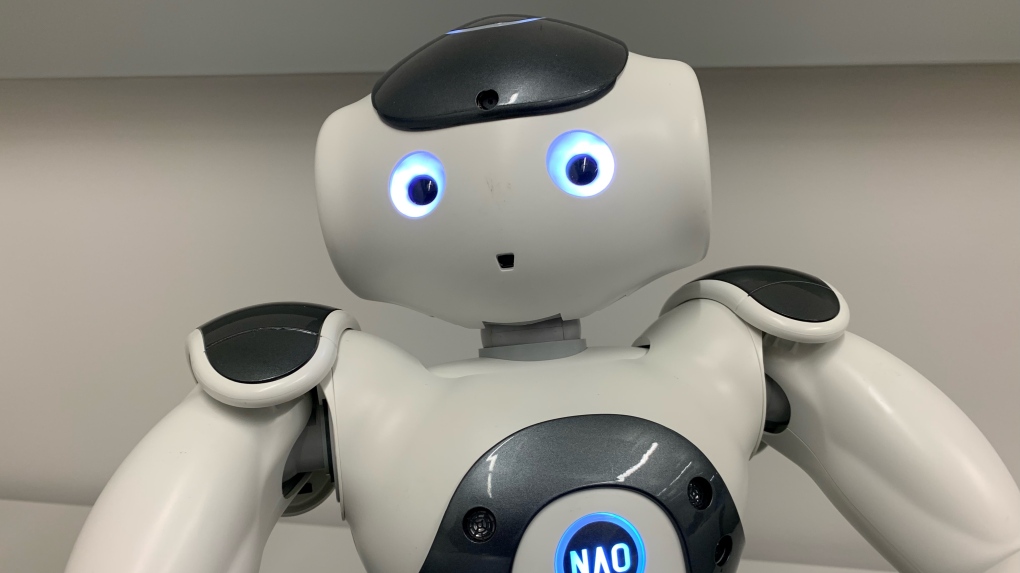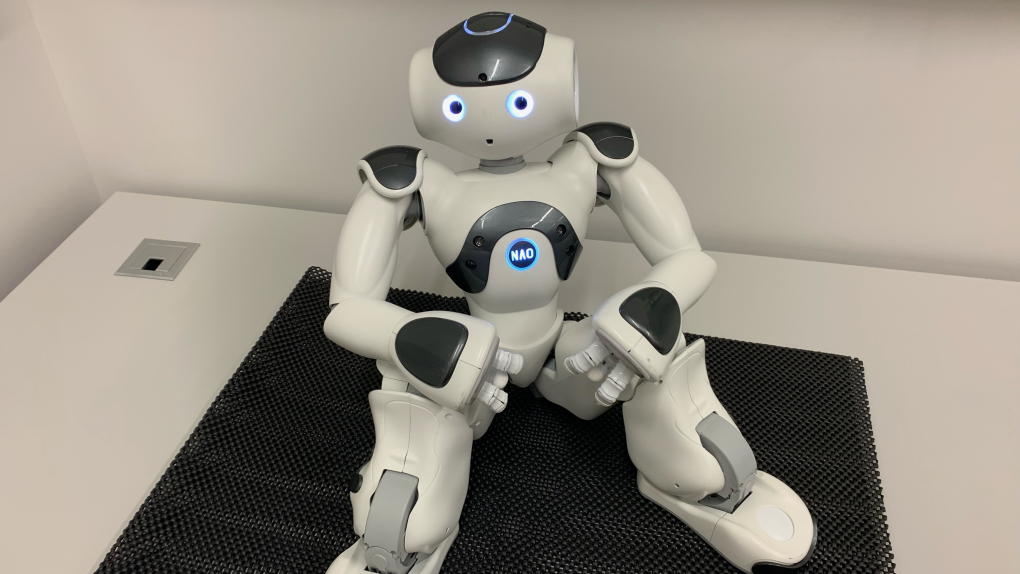What makes a good social robot? The answer might surprise you
Making a good first impression is important to many people – and it turns out it’s also something you need to think about when it comes to social robots, or robots designed for interpersonal interactions with humans.
New research out of the University of Waterloo’s Social and Intelligent Robotics Research Lab has found that people prefer robots that seem similar to themselves.
The study, done by professors Moojan Ghafurian and Kersten Dautenhahn, asked 95 people to rate pictures of 11 different robots on some key characteristics like how good, active and powerful they appeared.
Participants then had to rate themselves on the same traits and say how interested they would be in working with the various robots in a health care setting.
The results were interesting.
“The closer they rated the robot to themselves, the more interested they were to use it in a health care scenario,” says Ghafurian.
 Nao, a robot from the University of Waterloo Social and Intelligent Robotics Research Lab, whose image was used as part of the study. (Krista Simpson/CTV Kitchener)
Nao, a robot from the University of Waterloo Social and Intelligent Robotics Research Lab, whose image was used as part of the study. (Krista Simpson/CTV Kitchener)
The information could help fine-tune robots in the future.
“We want them to be successful, so we want them to be personalizable, which means to adjust their personality and interactions based on each individual,” Ghafurian explains.
Social robots could one day be used in numerous other settings too, including education. Masters student Andrea Chakma, who is also studying social robots, says the potential ranges from using robots to help children improve their spelling, to reminding older people to take their medications throughout the day.
 Nao, a robot from the University of Waterloo Social and Intelligent Robotics Research Lab, whose image was used as part of the study. (Krista Simpson/CTV Kitchener)
Nao, a robot from the University of Waterloo Social and Intelligent Robotics Research Lab, whose image was used as part of the study. (Krista Simpson/CTV Kitchener)
Ghafurian is particularly interested in how robots could help older adults, including people with dementia.
Chakma says good first impressions are especially important as people become familiar with the idea of social robots in real life, and not just how they’re portrayed in fiction.
“Oftentimes we see robots portrayed as sometimes scary, sometimes things that we don't understand, things that we don't recognize,” says Chakma. “So if a robot, at first glance, can make a really good impression for you and you can connect with that robot, then it makes you feel a lot more at ease and a lot more comfortable when you're actually interacting with it.”
CTVNews.ca Top Stories

Montreal man on the hook for thousands of dollars after a feature on his Tesla caused an accident
A Montreal man is warning Tesla drivers about using the Smart Summon feature after his vehicle hit another in a parking lot.
Denial and uncertainty are looming over a Biden-Trump rematch 6 months out from U.S. Election Day
Exactly six months before Election Day, Biden and Trump are locked in the first contest in 112 years with a current and former president competing for the White House. It's a race that is at once deeply entrenched and highly in flux as many voters are only just beginning to embrace the reality of the 2024 campaign.
opinion You don't need to be an influencer to earn income from social media
How legitimate are claims by some content creators that the average person can earn passive income from social media platforms like TikTok and Instagram? Personal finance columnist Christopher Liew says it's quite possible, if you're willing to put in the initial time and effort.
Should you save or splurge on makeup this summer?
If you're wondering whether you should splurge or save when it comes to buying skincare products and makeup this summer, we got some answers for you.
What a judge's gag order on Trump means in his hush money case
A gag order bars Trump from commenting publicly on witnesses, jurors and some others connected to the matter. The New York judge already has found that Trump, the presumptive Republican nominee for president, repeatedly violated the order, fined him US$9,000 and warning that jail could follow if he doesn't comply.
Israel closes Gaza crossing after Hamas attack and vows military operation 'in the very near future'
Israel closed its main crossing point for delivering badly needed humanitarian aid for Gaza on Sunday after Hamas militants attacked it, reportedly wounding several Israelis, while the defense minister warned of "a powerful operation in the very near future in Rafah and other places across all of Gaza."
‘Love has no boundaries’: Sask. couple in their 90s and 80s get married
Eighty-two-year-old Susan Neufeldt and 90-year-old Ulrich Richter are no spring chickens, but their love blossomed over the weekend with their wedding at Pine View Manor just outside of Rosthern.
Maple Leafs eliminated from NHL playoffs with Game 7 OT loss to Bruins
Sheldon Keefe told his players hockey history would remember them one way or another.
Madonna's biggest-ever concert transforms Rio's Copacabana beach into a massive dance floor
Madonna put on a free concert on Copacabana beach Saturday night, turning Rio de Janeiro's vast stretch of sand into an enormous dance floor teeming with a multitude of her fans.































